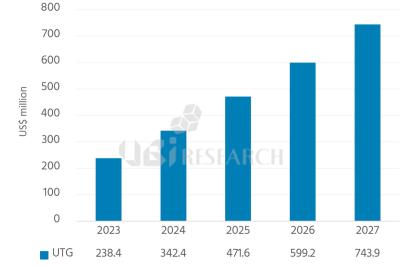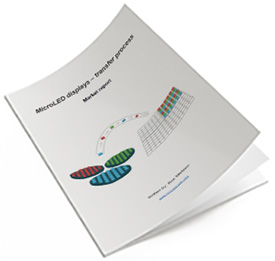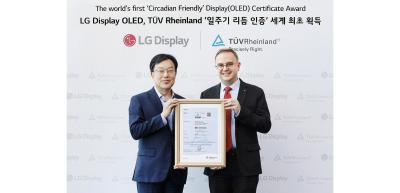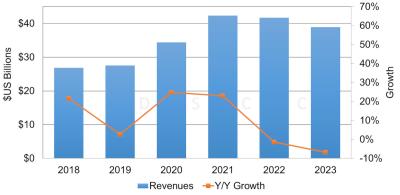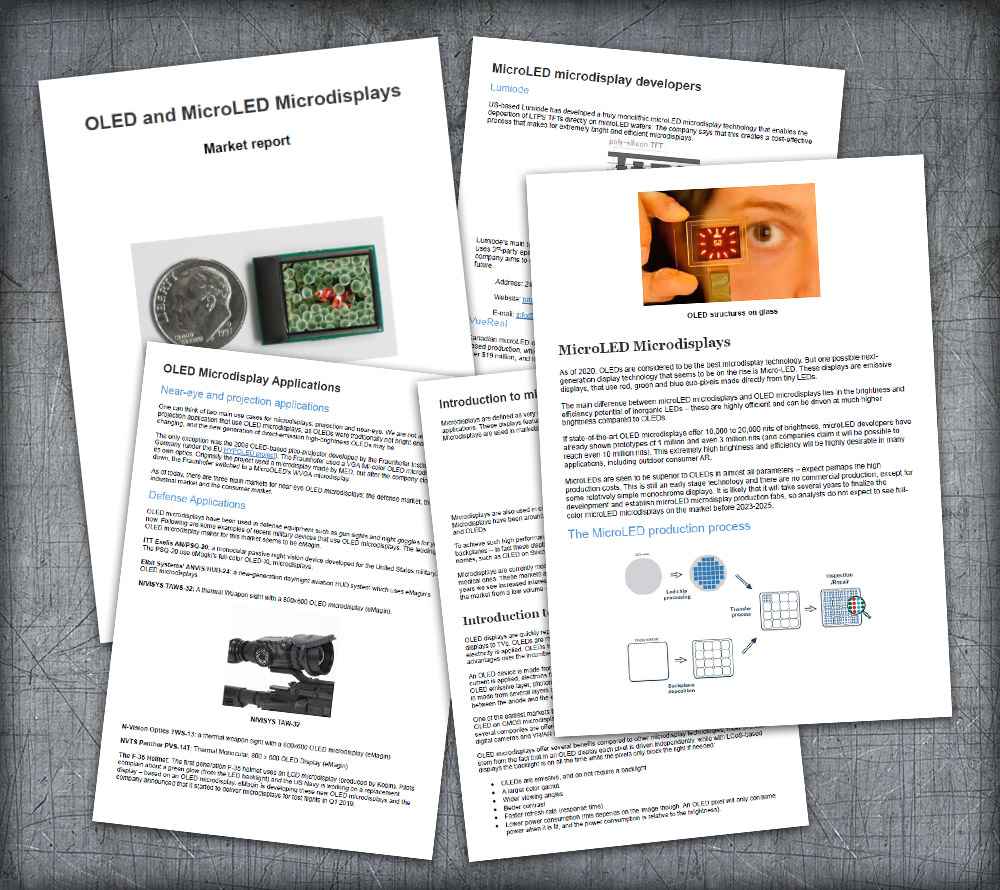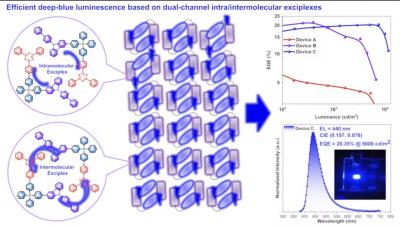The MicroLED Industry Association to host an automotive microLED display webinar
On September 4th the MicroLED Industry Association will host a private webinar on automotive displays and technologies. The automotive market represents a very good segment for display developers, as it offers high performance requirements and the ability to adopt premium solutions. Many analysts believe that this market will be one of the first ones to adopt microLED technologies (together with the AR/VR and wearables markets).
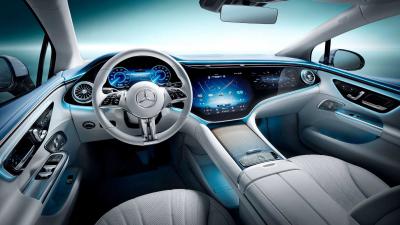
During the webinar, we will look at current solutions and future roadmaps, learn how the automotive industry looks at display solutions and next-generation technologies and see how microLEDs could find a market in the automotive industry.
The upcoming Seminar will feature three world-leading speakers, and will also be open to a Q&A session, to help increase microLED developers knowledge and involvement in the automotive industry:
UBI: the foldable OLED market will grow to 61 million units by 2027
UBI Research estimates that the foldable OLED market will reach 22 million units in 2023, and will grow to 61 million units by 2027, a CAGR of 29%.
UBI also published a forecast on cover material market for foldable OLEDs - this market will also expand, and will grow to $840 million n 2027. UBI says that the market share of ultra-thin glass will grow, as Samsung will only produce foldable OLEDs with UTG in the future, and other makers including BOE, CSoT and Visionox are developing UTG panels.
MicroLED-Info updates its MicroLED Transfer Process Market Report
We are happy to announce a new edition of our MicroLED Transfer Process Market Report, with all the latest information, new technologies and processes, and more. MicroLEDs are advancing quickly and the transfer process remains one of the key challenges.
Reading this report, you'll learn all about:
- All known microLED transfer processes
- The current industry and market status
- Advantages and disadvantages of transfer technologies
- Future technologies and roadmaps
The report package also provides:
- An introduction to microLED production processes
- Over 25 presentations, brochures and technical papers
- MicroLED chip-level market estimates and forecasts
- Free updates for a year
This microLED display transfer process report provides a comprehensive look into current and future LED transfer technologies processes used for the production of microLED displays. The report covers everything you need to know about the current status of the industry.
LG's OLED TV and monitor panels are the first to earn the Circadian-Friendly certification from TÜV Rheinland
Independent testing and certification leader TÜV Rheinland has awarded LG's OLED TV and monitor panels with its 'Circadian Friendly' certification. LG's OLEDs are the first displays to ever receive this award.
TÜV Rheinland new 'Circadian Friendly' certification is given to products that meet the standards of minimizing their impact on people's quality of life during the day and promote better sleep at night. These products undergo rigorous testing based on the 'Circadian Stimulus' metric, designed by the Rensselaer Polytechnic Institute's Lighting Research Center.
Samsung Electronics said to order the first WOLED panels from LGD earlier this month
According to recent reports, LG and Samsung finally officially signed a WOLED TV panel supply agreement, as Samsung Electronics plan to start producing OLED TVs based on LGD WOLED panels.
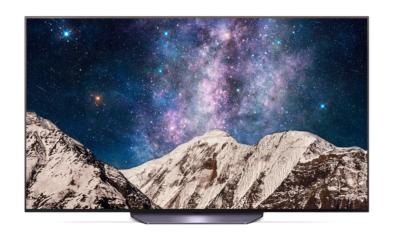
According to recent reports from Korea, Samsung Electronics placed the first order for WOLED panels (77-inch and 83-inch) from LGD earlier this month. This was a small order, used by Samsung to develop the first OLED TV, which Samsung aims to launch later in 2023. It seems the two companies haven't yet finalized all the details of their agreement.
AUO may close down its AFPD OLED fab in Singapore as it focuses on microLED for next-gen wearable and automotive displays
AU Optronics has a 4.5-Gen AMOLED production line in Singapore, active since around 2013. The AFPD line is a small-scale operation, and AUO never managed to expand its capacity and compete with large AMOLED producers.
According to a report from Japan, AUO is now considering closing down the AFPD line, and converting it to microLED R&D production line. It could move it back to Taiwan, or retain Singapore as a hub for AUO in Southeast Asia. The company will make a final decision, it seems, in early 2024.
DSCC: OLED panel revenues to decline in 2023, in a second consecutive year
DSCC says that OLED panel revenues will decline 7% in 2023 (to $38.9 billion), the second consecutive year that the OLED market is seeing a decline in sales. The largest declines will be in the OLED TVs and laptops segments.
The OLED smartphone market will actually grow 4% in unit sales, but revenues will decline 5%. The OLED TV market will decline 29% in 2023 in both revenues and units. OLED laptop unit sales will decline by 15%. All other segments, including AR/VR, automotive and tablets, will grow in sales and revenues in 2023.
Seeya orders OLED microdisplay deposition equipment from Sunic Systems in a $25.5 million deal
OLED microdisplay developer Seeya Information Technology has ordered OLED deposition (evaporation) equipment from Korea's Sunic System, in a deal worth $25.15 million.
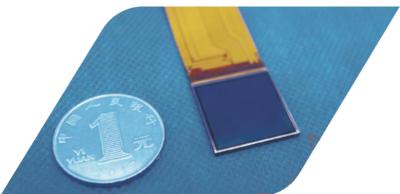
Sunic Systems will provide Seeya with 12-inch (300 mm) OLED deposition tools. Sunic is developing direct-patterning deposition equipment, but it is not clear whether this order is for such tools or whether these will be the standard white OLED with color filter deposition.
A new version of our OLED and MicroLED Microdisplay Market report released
Today we published a new edition of our OLED and MicroLED Microdisplays Market Report, with all the latest information. The new edition offers more that a dozen new updates, new companies, new brochures and catalogs, and more. Global multinational companies are working hard to develop and deploy next-generation AR and VR devices, and these devices will all be based on OLED and microLED microdisplay engines.
Reading this report, you'll learn all about:
- The advantages of OLED and MicroLED microdisplays
- The microdisplays that are available on the market today
- Information on all companies involved in this market
- Future technologies and roadmaps
The report package also provides:
- A list of all OLED microdisplays on the market
- A list of all OLED and MicroLED microdisplays makers
- Microdisplays spreadsheet
- Over 25 datasheets, presentations
- Free updates for a year
This microdisplays market report provides a great introduction to OLED and MicroLED microdisplays, and covers everything you need to know about the current status of the market and industry. This is a great guide if you're considering to adopt OLED microdisplays in your product, if you're looking to learn more about next-generation micro-LEDs and if you want to understand this industry better.
Researchers develop new deep-blue exciplex OLED emitters, break the world EQE record
Researchers from Germany's Karlsruhe Institute of Technology (KIT) and Shanghai University developed a new high-efficiency exciplex deep-blue OLED emitter material. The researchers say that this new materials achieves a external quantum efficiency (EQE) of 20.35% - a new world record for deep-blue emission.
The researchers explain that their exciplex strategy is based around a new molecule type with carbazole and triazine fragments linked by a silicon atom. The molecules assemble into nanoparticles which emit light in a different mechanism compared to standard single-molecule emitters. The energy levels of the electron-donating carbazole fragments and electron-accepting triazine fragments can be adjusted independently of each other to enable highly efficiency and stable red, green and blue OLED emitters.
Pagination
- Page 1
- Next page


